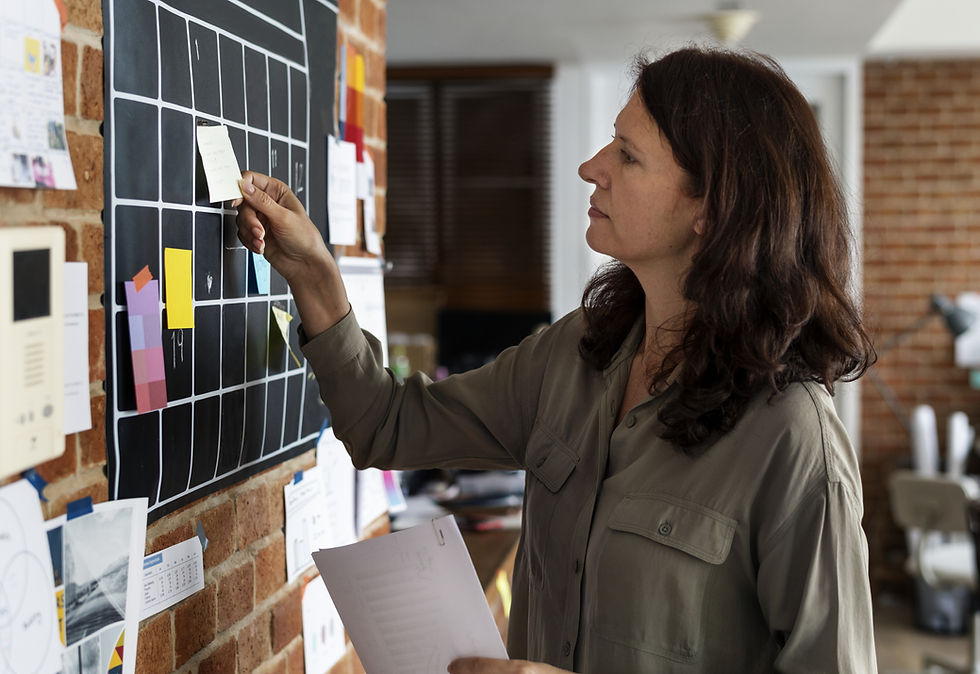The Risk Register - a vital safety document
- Georgina Cook

- Jan 22, 2021
- 3 min read
Updated: Feb 14, 2021
The most important document that you can do for your school is to formalise the Risk Register. Yes, it’s lengthy and yes – it does look like a Masterclass in Excel formulas, but it is also surprisingly adaptable once you take a deep breath and start making it your own. The first step in any safety procedure is of course consultation. Speak to everyone in the school, do your walkaround and gather all of the information on your facility to enable you to complete the document. Armed with this knowledge, make a strong coffee, sit down somewhere quiet with a large screen and begin methodically working your way through the document.
A matrix for analysis
Stage one is to go through the official Risk Register document. It’s supremely comprehensive and a great starting point. Simply choose your workplace – primary, secondary or specialist school as a start. Then go down the list slowly and thoroughly and if you don’t have a swimming pool, delete that line. Once you’ve removed any risks that don’t apply, begin at the top of the sheet and slowly read through the Department’s recommendations. Copy and paste the purple box across and annotate it to make sure that all controls implemented in your workplace are represented.
A process of assessment
One of the hardest elements of completing the Risk Register is the process of assessing the level of risk as you need to decide if a hazard is low, medium, high or extreme. However, if you read through the OHS Risk Management Procedure there is a fantastic guide that makes it easier to have a formulaic approach to assessing each hazard you’ve identified. The key is to balance the consequence of the hazard with the likelihood of it occurring in your circumstance following the control measures you’ve put in place.
You will also need to add any of your own specific risks to the Risk Register. For instance, you may have a lake or water feature on campus and this would need to be added to the Risk Register.

Once completed, the Risk Register is how you would demonstrate to the Department of Education, Worksafe or an external auditor that you have adequately controlled the hazards in your workplace. When you have assessed each hazard using the matrix as a school you must decide if the controls are adequate and make your own analysis over what level of risk you’re happy to accept. This is where a lot of schools get tripped up.
For instance, on your Risk Register if you assess the consequence of something to be ‘major’ or ‘severe’ then the lowest risk rating it will receive is ‘medium’, even if the likelihood of it occurring is ‘rare’. As a school, you must make a decision as to whether you feel like you’ve done enough to eliminate the risk and if additional control measures need to be put in place. For hazards that retain a ‘medium’ or ‘high’ rating you should draft a Safe Work Procedure (SWP) and a Risk Assessment to make sure that the hazard has been addressed. You should discuss this with your Health and Safety Committee with each hazard being addressed so that you build a central resource which summarises your hazards and controls.
Maintaining the document
The Risk Register is an active document, and it is something that should be constantly being referenced and reviewed. When a new risk is identified, or when a new addition is added to a facility, this additional risk needs to be added to the Risk Register. After Workplace Inspections at the end of every term, the Risk Register should be reviewed, and any additional hazards have been identified added to the document.
It also must be updated at the start of every school year, so it is worth spending the time setting up an accurate and thorough document. Do it well once and then every subsequent update will be a much more straightforward process. You also need to bear in mind that you’ll need a separate document for each campus as they are considered a different Designated Work Group (DWG) and require its own analysis and controls.
If you have any additional questions, we encourage you to call the Department of Education's OHS Advisory Service on 1300 074 715. Or if you’d like any further information on the services that TeachSafe offers please get in touch.


Comments